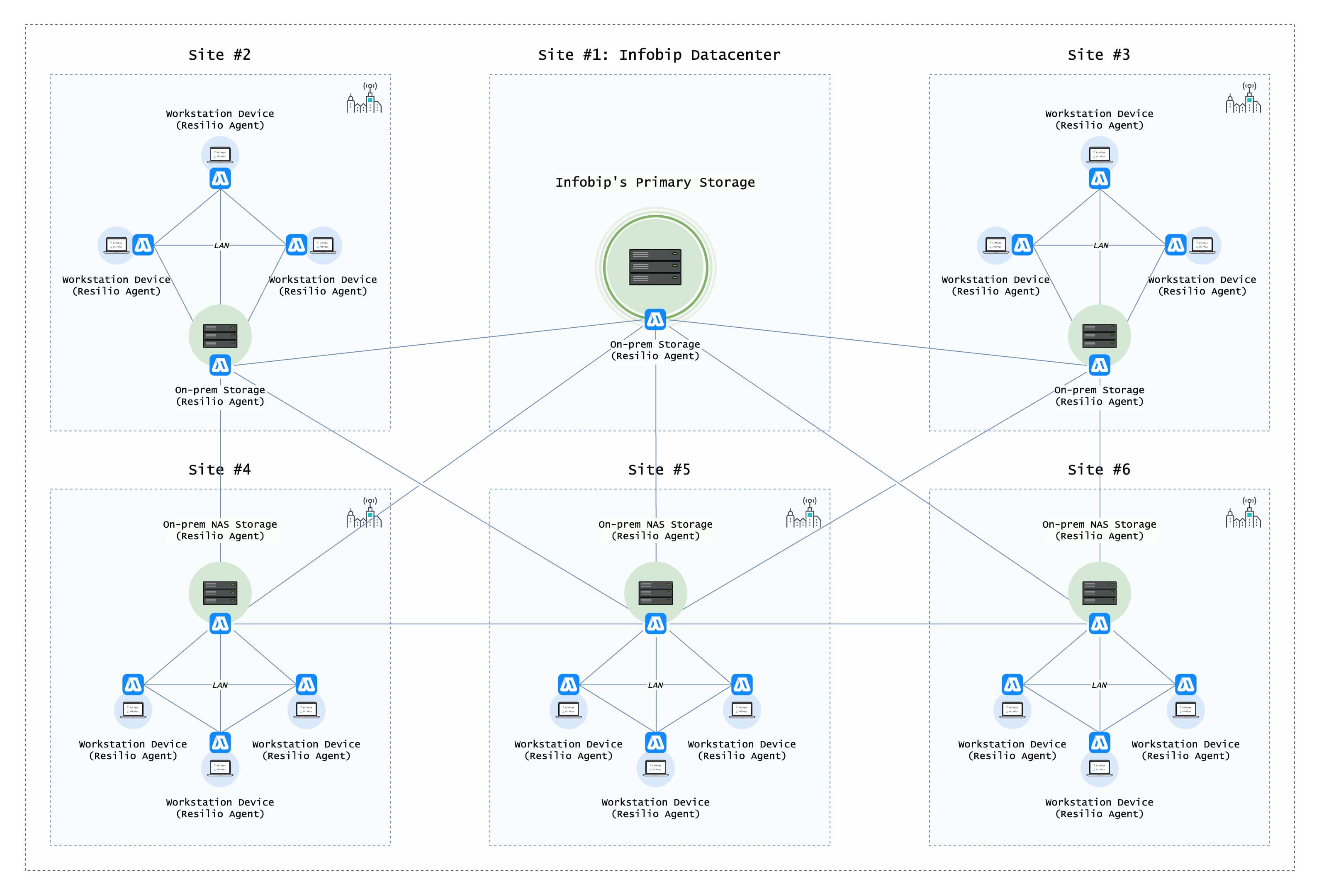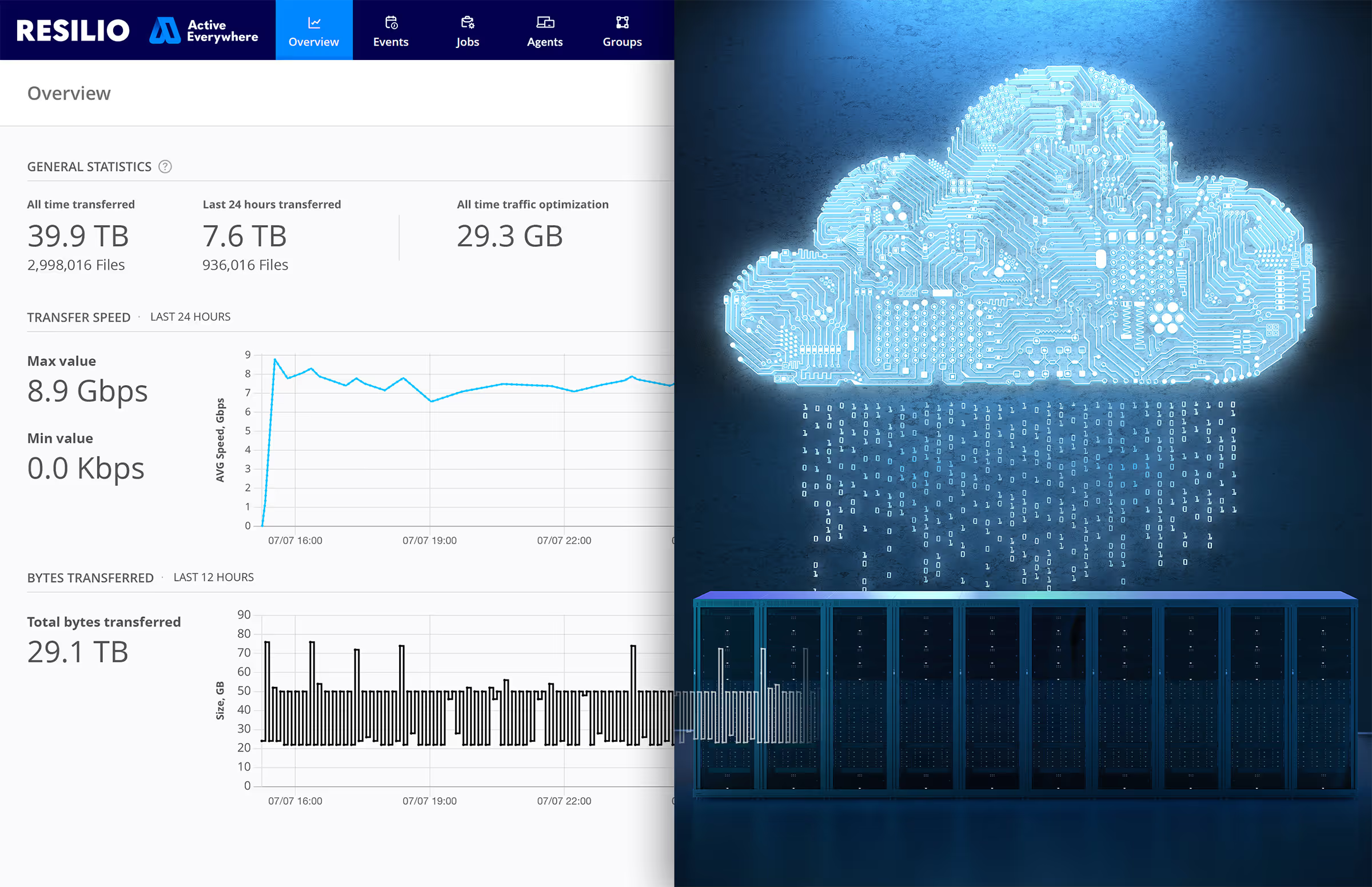IT Scaling and Business Scaling Go Hand-in-Hand. Here’s Why.


Introduction
Your business is in a period of massive expansion. HR is hiring more employees, the C-suite is rolling out new product initiatives, and you’re collaborating with more international business partners. Amid all this scaling, however, your core IT infrastructure hasn’t changed. Your data architecture hasn’t been updated and you have the same size team — yet, your workload seems to have doubled overnight.
Sound familiar? It’s a scenario that stems from a distorted perception of what scalability is and isn't. Business scalability and IT scalability aren’t mutually exclusive, yet many small-to-medium enterprises (SMEs) often treat them that way. In data-intensive industries like tech and media, this limited view of scalability can prove to be a major hindrance, saddling IT with unsustainable levels of responsibility. Ultimately, SME leaders must support their ambitious business initiatives with equally ambitious plans to expand IT resources.

The ideal approach to IT scalability is a proactive one, where you can forecast how your IT needs will evolve over time. This allows you to take a future-looking approach to decision-making. It takes significant time and resources to phase out legacy systems and processes — don’t wait until it’s too late to start considering what a scalable IT solution looks like.
SMEs are playing catch up when it comes to scalability
SMEs are at a disadvantage compared to their more well-resourced counterparts when it comes to scalability. For one, SMEs have significantly more growth potential, proportionally speaking. For example, expanding from one data center to two is a much more taxing lift than expanding from 10 data centers to 13. In smaller enterprises, the margin for error is also higher, and the organization often lacks the institutional knowledge that can help streamline the process.
This lack of experience can also cause SME leaders to have a skewed view of scalability, one that focuses solely on handling more users and larger data volumes. These capabilities are important, but they’re only one piece of the puzzle. Scalability must also encompass introducing infrastructure flexibility that allows for adding new features, integrating with other systems, and adapting to changing business needs. For most organizations, this requires partnering with vendors that can provide ongoing support.
A lack of scalability can tank an organization’s growth potential. This is largely due to the unanticipated timeline delays, troubleshooting, and security risks associated with forcing a limited system to go beyond its capabilities.
Consider the use of business VPNs. Suppose your enterprise used to work 100% in the office, and on the rare occasions that an employee needed to travel for work, they used a secure business VPN to access your company’s intranet. This approach works for one-off occasions, but a mass shift to hybrid and remote work (with employees in multiple locations) would expose the VPN’s limitations. In other words, your lack of infrastructure scalability would be revealed.
How to sell the C-suite on IT scalability
It’s one thing to understand the nuances of scalability in theory, but how can you put them into practice? For starters, how can you convince leadership, especially those who don’t come from a technical background, that IT expansion is a true necessity?
C-suite leaders are concerned with the big picture — developing and following through on a long-term vision for the organization. As such, your pitch should be just as ambitious and tie back to a clear business case.
Here are a few tips to consider for how to build a compelling business case for IT expansion:
Identify and Quantify Specific Scalability Issues: To start building your case, document concrete examples of where your current IT infrastructure is falling short. Pinpoint instances of system slowdowns or crashes. Track the frequency of data access issues for remote employees. And most importantly, calculate the costs associated with maintaining the outdated legacy systems that are causing these problems.
Quantifying these issues in terms of lost productivity, missed opportunities, or direct financial impact will go a long way in providing context for the executive or executives that you’re pitching to.
Pull information from a wide variety of sources: Any pitch related to IT scaling cannot afford to remain confined to IT-related concerns. Alignment with other departments is key. For example, consider collaborating with HR to show how scalable IT can improve the employee experience. Or partner with the operations department to illustrate how IT scalability can streamline processes throughout the organization.
To add more depth to your argument, bring in real-world examples and industry data that supports your argument. Find case studies of similar companies that have successfully scaled their IT infrastructure, and highlight the risks of falling behind competitors.
Frame your argument the right way: As we’ve established, framing your argument in the context of broader company goals and initiatives is paramount. In practice, this means tying scalable IT back to your company’s most pressing issues. If the C-suite is interested in expanding into a new market, explain how scalable IT infrastructure supports global operations. If improving customer experience is a priority, demonstrate how scalable IT can enhance service delivery and responsiveness.
Be sure to ground your argument with comprehensive data and a return on investment (ROI) analysis, calculating the long-term savings that leadership can expect from reduced downtime, improved efficiency, and decreased maintenance costs. A data-backed foundation makes the scalable future you’re selling more concrete and attainable.
Be prepared to meet the C-suite halfway: The C-suite is under tremendous pressure to make the smartest decision possible for the company — don’t be surprised if you’re initially met with pushback or concerns.
Be ready for questions related to finances, security, and business disruptions — and outline how you’re going to address each of them. If there’s still hesitation about a full-scale implementation, suggest a small-scale pilot project that can demonstrate the benefits of IT scalability in a controlled setting. The success from this pilot can then serve as a springboard for broader implementation.
Case Study: Solving Infobip’s scalability challenges
With 3,400 employees across 75 offices on six continents, scale is just as crucial for Infobip’s business as it is for its customers. Infobip transfers nearly 2 TBs per day, depending on the job. The company needed a solution that kept all of its sites highly available, accessible, and current within seconds. Moreover, the solution needed to be WAN-optimized — to overcome latency and achieve predictable speeds across multiple data centers and networks. Additionally, since these files may contain user data, adhering to data privacy regulations in each country was mission-critical.

By using Resilio Active Everywhere to synchronize mission-critical files across 40+ data centers around the world, Infobip is able to deliver superb platform availability, meeting the highest standard in the global mobile services industry. Without the need for extensive coordination, the infrastructure team can simply adjust their workflows, speeds, and bandwidth based on timeframe, location, and country regulations. They can easily distribute or synchronize updates among multiple jobs between data centers and replicate and sync large files at lightning speed — even in areas with poor and unreliable connections or where bandwidth is limited.
IT scalability is a non-negotiable investment
If your IT solutions aren’t as scalable as you’d like, you have options. Identifying current limitations and connecting them back to your business’ growth objectives is a valuable first step in engaging C-suite support to move forward with new infrastructure investments.

At the end of the day, the business will only go as far as your IT infrastructure allows it to. Whether you’re fully on-prem, in the cloud, or hybrid, the ability to scale your technology across the organization is essential for expanding your employee and customer base. Ultimately, investing in scalable IT infrastructure is not just about keeping up with current growth but enabling and sustaining it for the long term.
Take the next step to future-proofing your SME—start a free Resilio Active Everywhere trial or schedule a demo with our specialists.
About The Author


Ilan is the co-founder and CPO of Resilio, where he leads the Product and Engineering teams. Before Resilio, he was the GM of Platforms at BitTorrent and was responsible for leading a distributed organization of 120 employees at Check Point Software. Ilan has also served as a visiting scientist at the MIT Media Lab, where he focused on peer-to-peer software research.
Featured Resources

Active Everywhere for Hybrid Cloud
One platform for centralized cloud storage with fast local access and built-in data protection.

Global Construction Company
A North American Engineering and Construction Leader Improved VDI User Experience with Resilio Platform and Hybrid Cloud

Global Data Protection Company
Enabling bidirectional sync of all user profiles, user data, and applications across sites for DFS and VMware Horizon Dynamic Environment Manager (DEM).
